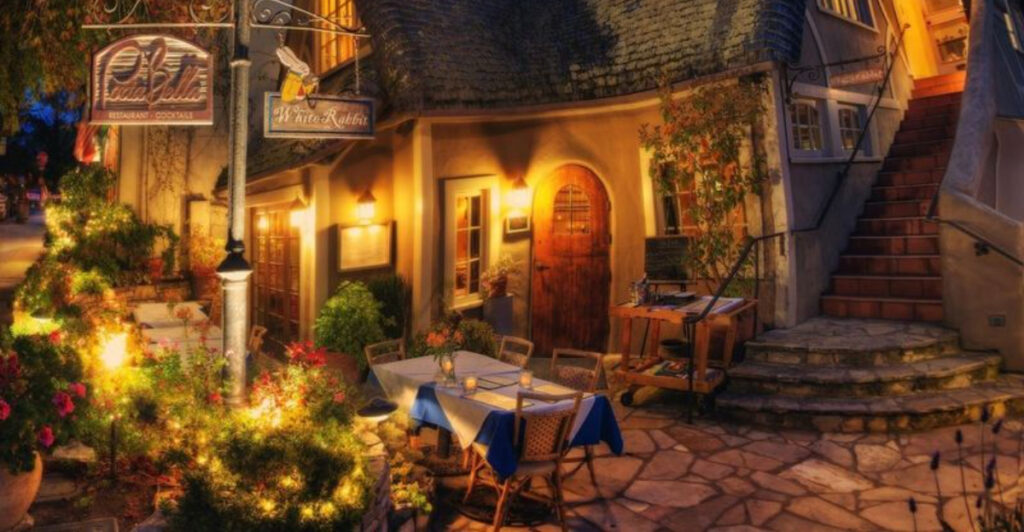Nestled on California’s central coast, Carmel-by-the-Sea is a magical one-square-mile village that seems plucked straight from a storybook. With its whimsical cottages, secret passageways, and artistic soul, this seaside hamlet has rightfully earned its nickname as the “Fairy-Tale Village.” Halfway between San Francisco and Los Angeles, this charming destination offers visitors an enchanting escape from the ordinary, where European-style architecture meets California coastal beauty.
1. Storybook Cottages That Look Straight Out of a Fairy Tale
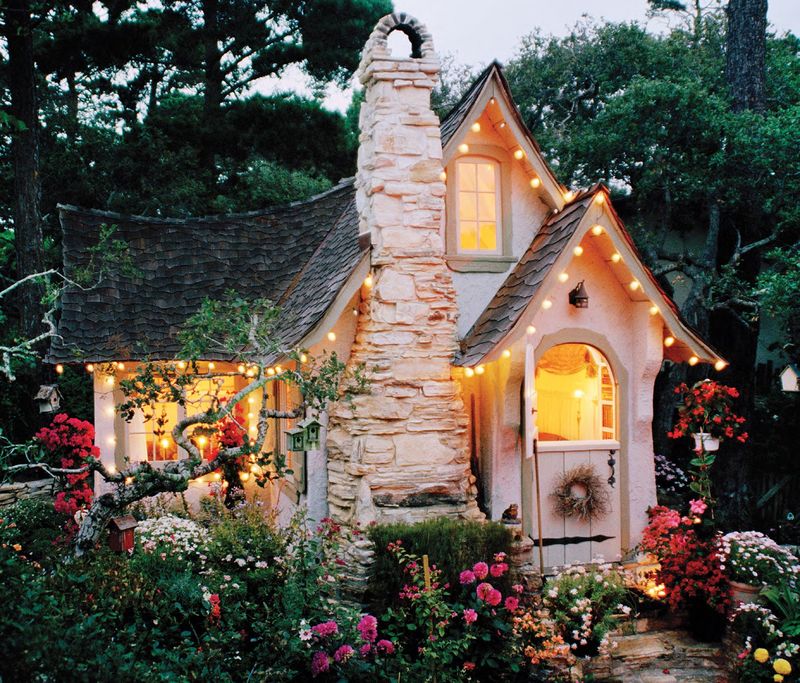
Hugh Comstock’s whimsical cottages transform Carmel into a real-life fairy tale. Built in the 1920s, these enchanting homes feature crooked chimneys, rolled eaves, and stone pathways that seem designed for elves rather than humans.
The most famous, nicknamed “Hansel” and “Gretel,” were originally built to house his wife’s doll collection but sparked an architectural movement that defined the town. Today, about 21 original Comstock cottages remain, their storybook charm protected by preservation laws.
Wandering past these gingerbread-style homes feels magical – like stepping into the pages of your favorite childhood story. Though privately owned, visitors can follow self-guided walking tours to admire these architectural gems from the street.
2. No Street Addresses – Just Charming House Names
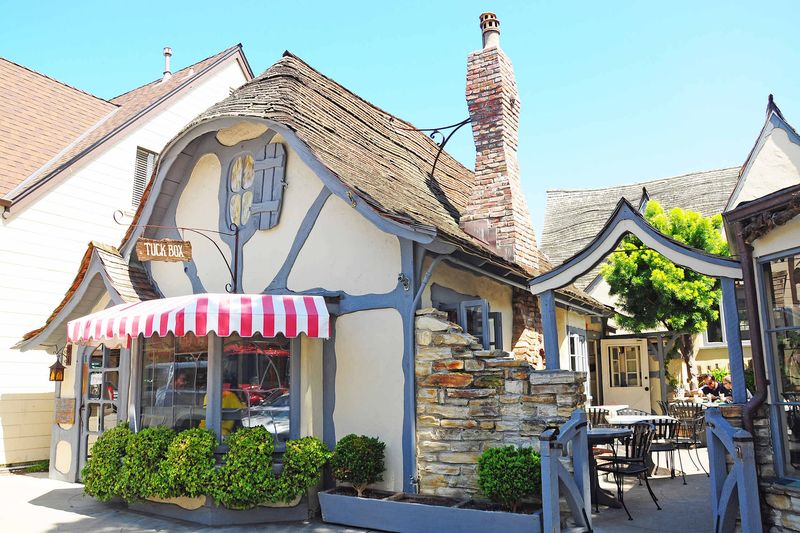
Imagine a town where no one has a street address! Carmel-by-the-Sea residents don’t receive mail at home—instead, everyone picks up their correspondence at the post office, creating daily opportunities for neighborly chats.
Houses have names instead of numbers, like “Sea Urchin” or “Periwinkle.” This quirky tradition dates back to the early 1900s when bohemian artists first settled here. When giving directions, locals reference landmarks: “two doors down from the blue cottage with the purple door.”
This address-free approach fosters community and preserves the village’s fairytale atmosphere. Visitors often find themselves delightfully lost among the unnamed streets, discovering hidden gems around every corner that they might otherwise have missed.
3. Secret Passageways and Hidden Courtyards
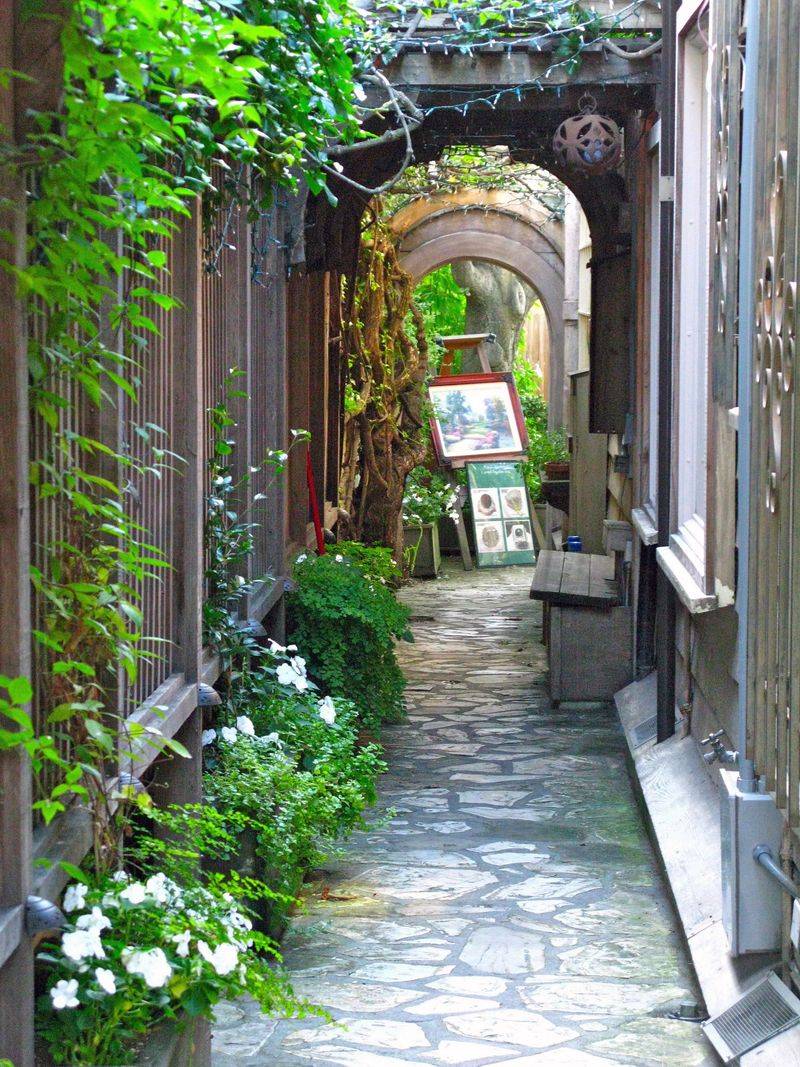
Tucked between Carmel’s main streets lie over two dozen secret passageways and hidden courtyards waiting to be discovered. These enchanting alleyways, with names like “Secret Garden Passage” and “Court of the Golden Bough,” reveal a magical labyrinth of shops, galleries, and cafés.
Many passages bloom with climbing roses and wisteria, creating tunnel-like pathways that feel plucked from a children’s storybook. Fountains burble in secluded courtyards where wrought-iron benches invite visitors to pause and savor the moment.
Finding these hidden gems becomes a delightful treasure hunt – you might stumble upon a tiny wine bar nestled in a courtyard or a bookshop tucked away behind a garden gate. Each passageway tells its own story, adding to Carmel’s reputation as a place where wonder awaits around every corner.
4. The Quirky High Heel Law

Only in Carmel would you need a permit to wear high heels! This unusual law, still technically on the books today, prohibits wearing shoes with heels higher than two inches without a special permit from City Hall.
The ordinance wasn’t created to police fashion but to protect the city from lawsuits. Carmel’s uneven, root-buckled sidewalks and cobblestone pathways could send stiletto-wearing visitors tumbling, so city officials enacted this peculiar rule in the 1920s.
While rarely enforced today (no fashion police will arrest you for your favorite pumps), the high heel permit has become a beloved quirky souvenir. Visitors can stop by City Hall and request a free permit, which makes for a memorable keepsake and conversation starter about Carmel’s fairytale charm and eccentric personality.
5. Carmel Beach’s Powdery White Sand and Sunset Celebrations

At the foot of Ocean Avenue lies a crescent of impossibly white sand that rivals Caribbean beaches. Carmel Beach’s signature powdery sand, created from local granite and quartz, feels like walking on sugar beneath your feet.
What makes this beach truly magical is the nightly sunset ritual. As golden hour approaches, locals and visitors gather with blankets, wine glasses, and often their four-legged friends (Carmel is famously dog-friendly) to watch nature’s show.
When the sun finally dips below the horizon, something wonderful happens – spontaneous applause erupts along the shore. This heartwarming tradition captures Carmel’s appreciation for beauty and community. Bonfires are permitted in designated areas, adding to the enchantment as twilight casts its spell and cypress trees become dramatic silhouettes against the painted sky.
6. A Century-Old Artist Colony with Creative Soul
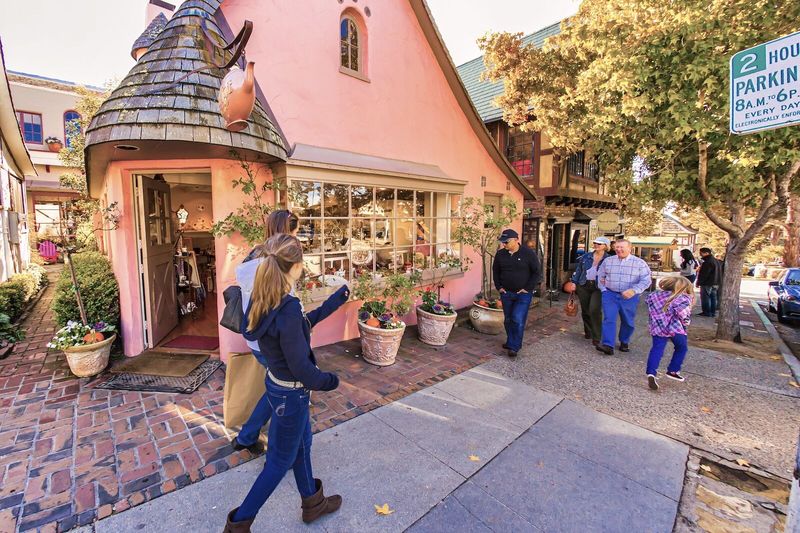
Carmel’s fairytale identity was shaped by the artists who flocked here after the 1906 San Francisco earthquake. Seeking refuge, writers, painters, and photographers established a bohemian colony where creativity flourished amid the inspiring coastal landscape.
Famous residents included poet Robinson Jeffers, photographer Ansel Adams, and writer Jack London. Their legacy lives on in the town’s nearly 100 art galleries – the highest concentration per square mile in the country.
The Carmel Art Association, California’s oldest gallery cooperative, has showcased local artists since 1927. Even today, you’ll spot plein air painters capturing the coastline on canvas and sculptors working in hidden garden studios. This artistic heritage infuses Carmel with a dreamy, expressive character that separates it from typical beach towns and reinforces its identity as a place where imagination and beauty reign supreme.
7. Fairy-Tale Dining in Enchanted Garden Settings
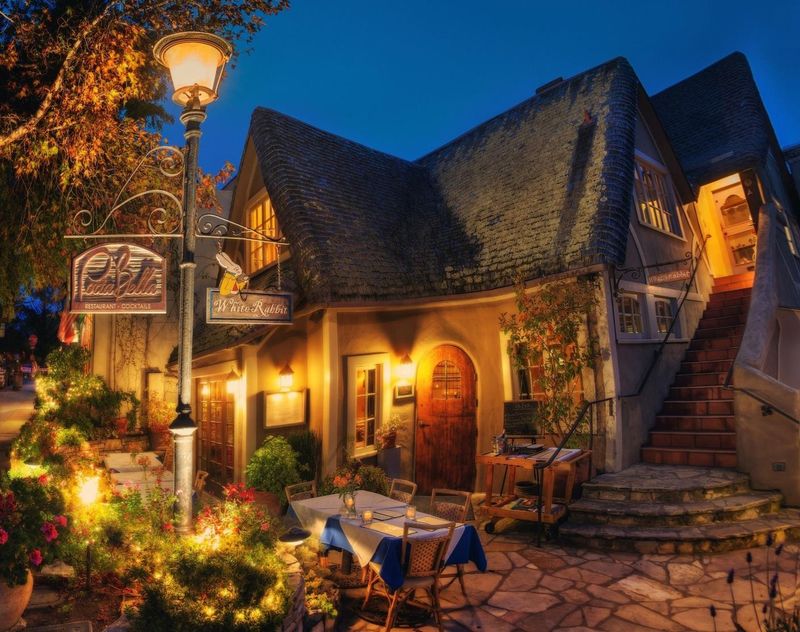
Carmel’s culinary scene feels plucked from a storybook, with restaurants hidden in secret gardens and tucked inside historic cottages. Candlelit tables nestled among flowering trellises create magical dining environments unlike anywhere else in California.
At La Bicyclette, diners feast on wood-fired pizzas inside a French country cottage with exposed beams and vintage decor. Casanova Restaurant serves Mediterranean cuisine in a 1920s house with a heated garden patio draped in twinkling lights and flowering vines.
Many establishments emphasize farm-to-table cuisine featuring ingredients from nearby Carmel Valley farms. With the highest restaurant-per-capita ratio of any small U.S. city, Carmel offers everything from casual fairy-tale tea rooms to sophisticated dining experiences – all without a single fast-food chain in sight, thanks to strict ordinances preserving the town’s enchanted character.
8. Cypress Tree Tunnel Leading to Mission Ranch
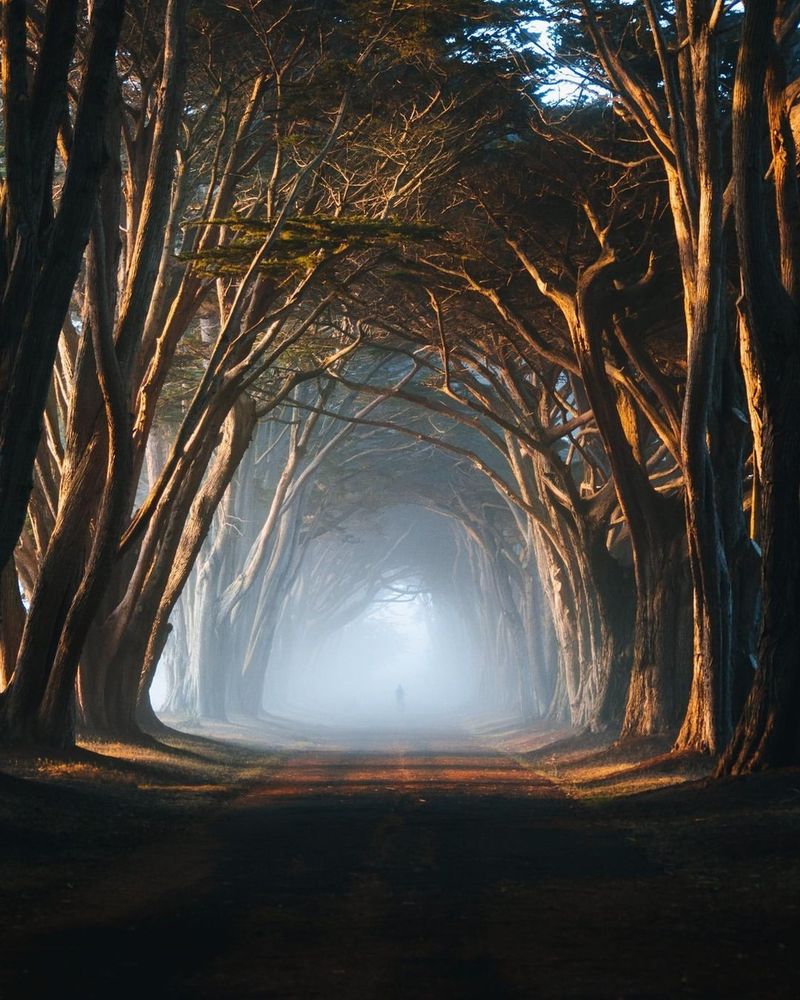
A magical tunnel formed by ancient cypress trees creates one of Carmel’s most photographed scenes. These wind-sculpted trees, with their twisted trunks and flat, table-like tops, form a natural archway that seems designed by nature’s most whimsical architect.
This enchanting pathway leads to Mission Ranch, a historic property saved from development by former Carmel mayor Clint Eastwood. The 1850s farmhouse and surrounding buildings now serve as a charming hotel and restaurant where sheep graze peacefully in meadows overlooking the sea.
The cypress tunnel is most magical at golden hour, when sunlight filters through the branches creating dappled patterns on the path below. Photographers flock here year-round, but locals know the most ethereal moment comes after light fog rolls in, creating a misty, otherworldly scene straight from the pages of a fantasy novel.
9. No Streetlights, Chain Stores, or Mail Delivery

Carmel fiercely guards its fairytale atmosphere through unusual city ordinances that might seem eccentric elsewhere. The village has no streetlights, allowing stars to shine brilliantly at night and creating a romantic, old-world ambiance for evening strolls.
Chain restaurants and stores are prohibited, ensuring the business district remains filled with one-of-a-kind boutiques and family-owned eateries. Even ice cream parlors must apply for special permits! Neon signs and billboards are banned, preserving the village’s storybook aesthetic.
Perhaps most charmingly, there’s no home mail delivery – a tradition dating back to when residents gathered at the post office to share news and build community. These quirky rules might seem impractical in the modern world, but they’ve successfully preserved Carmel’s magical character while nearby coastal towns have succumbed to commercialization.
10. Fairytale Inns Where Every Room Tells a Story
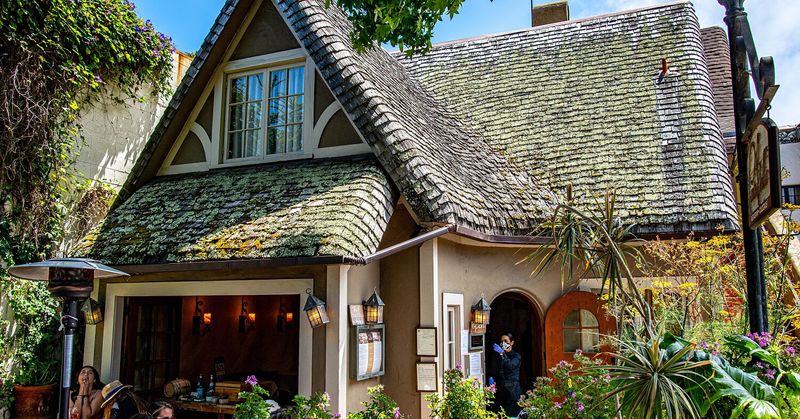
Forget cookie-cutter hotel chains – Carmel’s accommodations are as enchanting as the village itself. Historic inns occupy converted cottages where each room features unique decor, perhaps a stone fireplace, Dutch door, or window seat overlooking secret gardens.
The Tally Ho Inn charms guests with its English country manor style, while Tickle Pink Inn perches dramatically on a cliff with panoramic ocean views. Many properties serve afternoon wine and cheese in garden courtyards, encouraging guests to mingle and share discoveries from their day’s adventures.
Morning brings fresh-baked pastries delivered in baskets to your door or enjoyed in breakfast rooms with hand-painted murals. These intimate properties, many family-owned for generations, offer personalized service impossible at larger resorts – perhaps a handwritten note with restaurant recommendations or a specially prepared picnic basket for beach sunset-watching.

